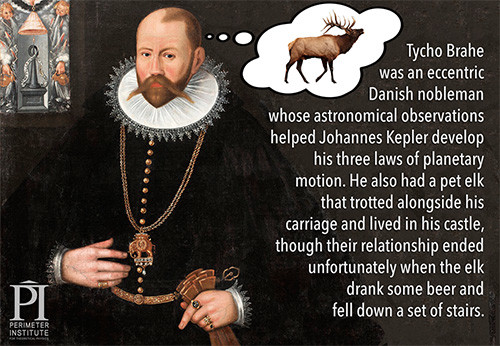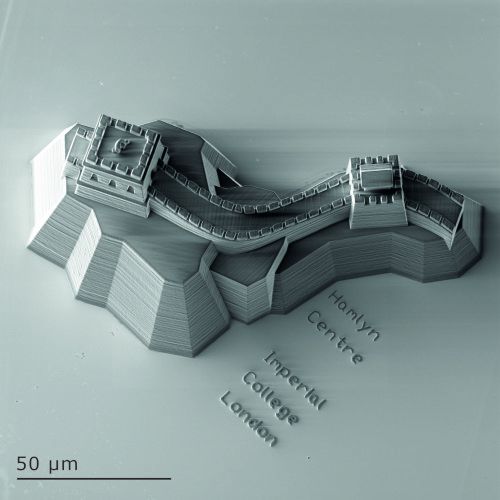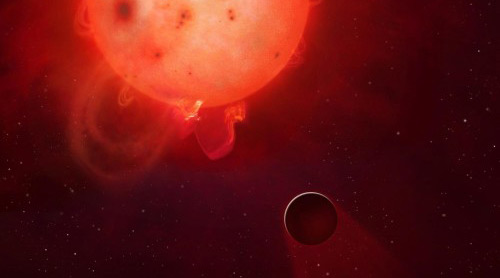Posts by: Tushna Commissariat
Scientists battle celebrities, a quantum ‘unconference’ and space travel, past and future
By Tushna Commissariat
Its been a strange week for scientists and celebrities popping up together on the world stage – what with rapper B.o.B and Neil deGrasse Tyson’s very public face-off about the former’s conspiracy theory claims of the Earth being flat – but it didn’t end there. In a celebrity trio that is even more surprising, physicist Stephen Hawking has come together with Hollywood actor Paul Rudd, (most recently starring in the film Ant-Man) in a video narrated by Keanu Reeves. Earlier this week, Caltech’s Institute for Quantum Information and Matter hosted the event One Entangled Evening: a Celebration of Richard Feynman’s Legacy. As a promo of sorts for the event – which had special appearances by Rudd, Reeves, Hawking, Bill Gates and even Yuri Milner, apart from actual quantum physicists such as John Preskill and Dave Wineland – they filmed the above video with Rudd and Hawking battling each other at a game of quantum chess. You will have to watch the video to see who wins.
View all posts by this author | View this author's profile
Scientists officially ground Spider-Man

Stick together: both ants and geckos have adhesive pads that let them scale vertical surfaces. (Courtesy: A Hackmann/D Labonte)
By Tushna Commissariat
Don’t tell the kids just yet, but becoming Spider-Man, even after being bitten by a radioactive spider, is looking less and less likely for us humans – we are just too big. The latest work, done by researchers at the University of Cambridge in the UK, has shown that gecko-sized is pretty much the largest you can be if you realistically want to scale up walls with adhesive pads. Any bigger, and most of your surface area would need to be covered in large sticky pads to pull off the gravity-defying walk. Indeed, the team estimates that roughly 40% of an average human being’s total body surface would need to be sticky – this means a whopping 80% of your front would be covered in adhesive pads.
Physicists’ pets, seven stars for Bowie, ping-pong in space and more

Prancer and the astronomer: Brahe and his pet elk. (Courtesy: Perimeter Institute)
By Tushna Commissariat
Sparks of inspiration come from many sources, but for some of the 20th century’s most well known scientists, their four-legged pets played a key role. From Tesla’s cat “Macak” – his interest in electricity was lit as a child when he noticed sparks generated while he stroked Macak – to Schrödinger’s (real live) dog “Burshie”, these intellectual giants sought the company of pets just as we do and over at the Perimeter Institute’s website, you can learn all about “Great physicists and the pets who inspired them”. My favourite “pet” is of course Tycho Brahe’s infamous elk (you can read about it in the image above). With all of these pets about, its a miracle that a paper wasn’t eaten by a naughty dog or cat!
Is the solar system’s planetary count back up to nine?
By Tushna Commissariat
In August 2006 the distant world that is Pluto was “downgraded” from planet to “dwarf planet” by the International Astronomical Union. Now, 10 years on, it seems that a new planet may be joining the ranks of the other more familiar eight, thanks to two researchers from the California Institute of Technology in the US, who have uncovered evidence of a giant planet tracing a bizarre, highly elongated orbit in the outer solar system.
Although it has not been observed directly just yet, Konstantin Batygin and Mike Brown discovered the planet’s existence via mathematical modelling and computer simulations. The newly found “Planet 9” is about 10 times as massive as Earth and its orbit is nearly 20 times farther from the Sun on average than Neptune, placing it firmly within the Kuiper belt. If the duo’s calculations are correct, it means that it takes Planet 9 anywhere between 10,000 and 20,000 years to complete one orbit, making it a long year indeed. The research is presented in The Astronomical Journal (which is published by IOP Publishing, which also publishes Physics World).
View all posts by this author | View this author's profile
The life and times of Einstein – ‘A vagabond and a wanderer’

Falling in: Sir Roger Penrose’s sketch of a black-hole collapse. (Courtesy: Tushna Commissariat)
By Tushna Commissariat
So much has been said about Einstein and his general theory of relativity (GR) that one would assume there isn’t two entire days worth of talks and lectures that could shed new light on both the man and his work. But that is precisely what happened last weekend at Queen Mary University London’s “Einstein’s Legacy: Celebrating 100 years of General Relativity” conference, where a mix of scientists, writers and journalists talked about everything from the “physiology of GR” to light cones and black holes, to M-theory and even GR’s “sociological spin-offs”.
The opening talk, “Not so sudden genius”, was given by journalist and author of “Einstein: A hundred years of relativity“, Andrew Robinson. The talk was very fascinating and early on Robinson outlined that Einstein stood on the shoulders of many scientists and not just “giants” such as Newton and Mach. But he also acknowledged that the scientist was always a bit of a loner and he preferred it this way. Robinson rightly pointed out that until 1907, Einstein was “working in brilliant obscurity” and later, even once fame found him, rootlessness really suited Einstein’s personality – he described himself as “a vagabond and a wanderer”.
Dipping into the physics of a chocolate fountain

Dark flow: Adam Townsend ponders the dynamics of a chocolate fountain. (Courtesy: London Mathematical Society)
By Tushna Commissariat
When most people look at a chocolate fountain in a restaurant or maybe at a party, they are mostly thinking about all the yummy treats they can dunk into the liquid-chocolate curtain. But when a physicist or a mathematician looks at one, they can’t help but notice some of the interesting fluid dynamics at play – most visible is how the curtain of chocolate does not fall straight down, rather it pulls inwards, and that melted chocolate is a non-Newtonian fluid.
University College London (UCL) student Adam Townsend decided to work on this topic for his MSci project and has now published a paper on his findings in the European Journal of Physics. To study the inflow effect, he looked into some classic research on “water bells”, where the same flow shape is seen. “You can build a water bell really easily in your kitchen,” says UCL physicist Helen Wilson, who was Townsend’s MSci project supervisor and the paper’s co-author. “Just fix a pen vertically under a tap with a 10p coin flat on top and you’ll see a beautiful bell-shaped fountain of water.”
View all posts by this author | View this author's profile
Einstein’s legacy, 100 years on
By Tushna Commissariat
As readers of Physics World, you probably don’t need me to tell you that this year marks 100 years since legendary physicist Albert Einstein laid the foundations for his revolutionary general theory of relativity (GR). This month marks the exact time when he began giving a series of four weekly lectures – the first of which was on 4 November 1915 – to the Prussian Academy of Sciences in Berlin. Indeed, today is the centenary of the final lecture, when he presented his “Field equations of gravitation”. In the video above, philosopher and one-time physicist Jürgen Renn, from the Max Planck Institute for the History of Science in Berlin, gives a short and sweet explanation of GR and its impact on physics.
Tiny gifts for world leaders, Hubble’s birthday and more

Tiny trophy: The Great Wall of China, printed with a Nanoscribe system at the Hamlyn Centre, Imperial College London. (Courtesy: Nanoscribe)
By Hamish Johnston and Tushna Commissariat
Last month, China’s president Xi Jinping’s was on a state visit in the UK and while here, he toured a few academic institutions, including the UK’s new National Graphene Institute (NGI) in Manchester and Imperial College London. As we reported in an earlier blog, Nobel-prize-winning Manchester physicist Kostya Novoselov presented President Xi “with a gift of traditional Chinese-style artwork, which Kostya himself had painted using graphene paint”. This week we found out that the Imperial scientists also presented him with a “tiny gift” in the form of a 50 µm scale version of a section of the Great Wall of China, imaged above, created with a Nanoscribe 3D printer. Prince Andrew, who was also on the visit, was given an image of a panda leaping over a bamboo cane, which was printed on the tip of a needle.
Radiation blasts render Earth’s twin inhospitable to life

Radioactive? Kepler-438b is regularly irradiated by huge flares of radiation from its host star. (Courtesy: Mark A Garlick/University of Warwick)
By Tushna Commissariat
In the past decade or two, exoplanetary research has been booming as NASA’s Kepler telescope and its cohorts have found nearly 2000 exoplanets and 5000 promising candidates. Unsurprisingly, we have been searching long and hard for those planets that could be habitable or are as similar in shape, size and proximity to the host star as the Earth is to the Sun. Indeed, in January this year Kepler scientists announced that they had found the most Earth-like planet to date – Kepler-438b – orbiting within the habitable zone of its host star, the red dwarf Kepler-438, which lies about 470 light-years from Earth.
The planet, which is slightly bigger than our own, was found to be rocky, and, thanks to its location, rather temperate, meaning that it could have flowing water on it – two key factors that astronomers look for when accessing a planet’s habitability. Unfortunately, David Armstrong of the University of Warwick in the UK and colleagues have now found that Earth’s twin is regularly bathed in vast quantities of radiation from its star – a real dampener when it comes to the formation of life as we known it.
View all posts by this author | View this author's profile
X-ray visions of the past, undead physics, stargazing cruises and more
By Tushna Commissariat
Peering into a small 17th century metallic box, without damaging its contents, is no mean feat. But thanks to the use of synchrotron radiation, scientists at the European Synchrotron Radiation Facility (ESRF) in Grenoble were able to “see” inside one, using a technique known as synchrotron X-ray phase contrast micro-tomography. They were also able to create a 3D reconstruction of clay medals concealed within the very fragile and badly oxidized box, which was discovered on the archaeological site of the Saint-Laurent church, and is now at the archaeological museum of Grenoble (MAG). Take a look at the video above to see what the box held. You can also learn more about the researcher’s tomography technique in an article of ours.
Tomorrow is Halloween, so we hope you have your physics-themed pumpkins carved and out on your doorsteps. For some spooky reading this week, take a look at Davide Castelvecchi‘s “Zombie physics: 6 baffling results that just won’t die” story over on the Nature News website. In it, he lists six “undead” results – things that physicists just can’t seem to prove or disprove – including long-running disagreements over certain dark-matter results, hemispheric inconsistencies and spinning protons. Let us know what you think are some of the most undead physics results that should be laid to rest, in the comments below. And while you are at it, make sure to look at today’s creepy edition of Fermilab Today to read about the rise of the zombie accelerator and the “The cult of the Tev.”